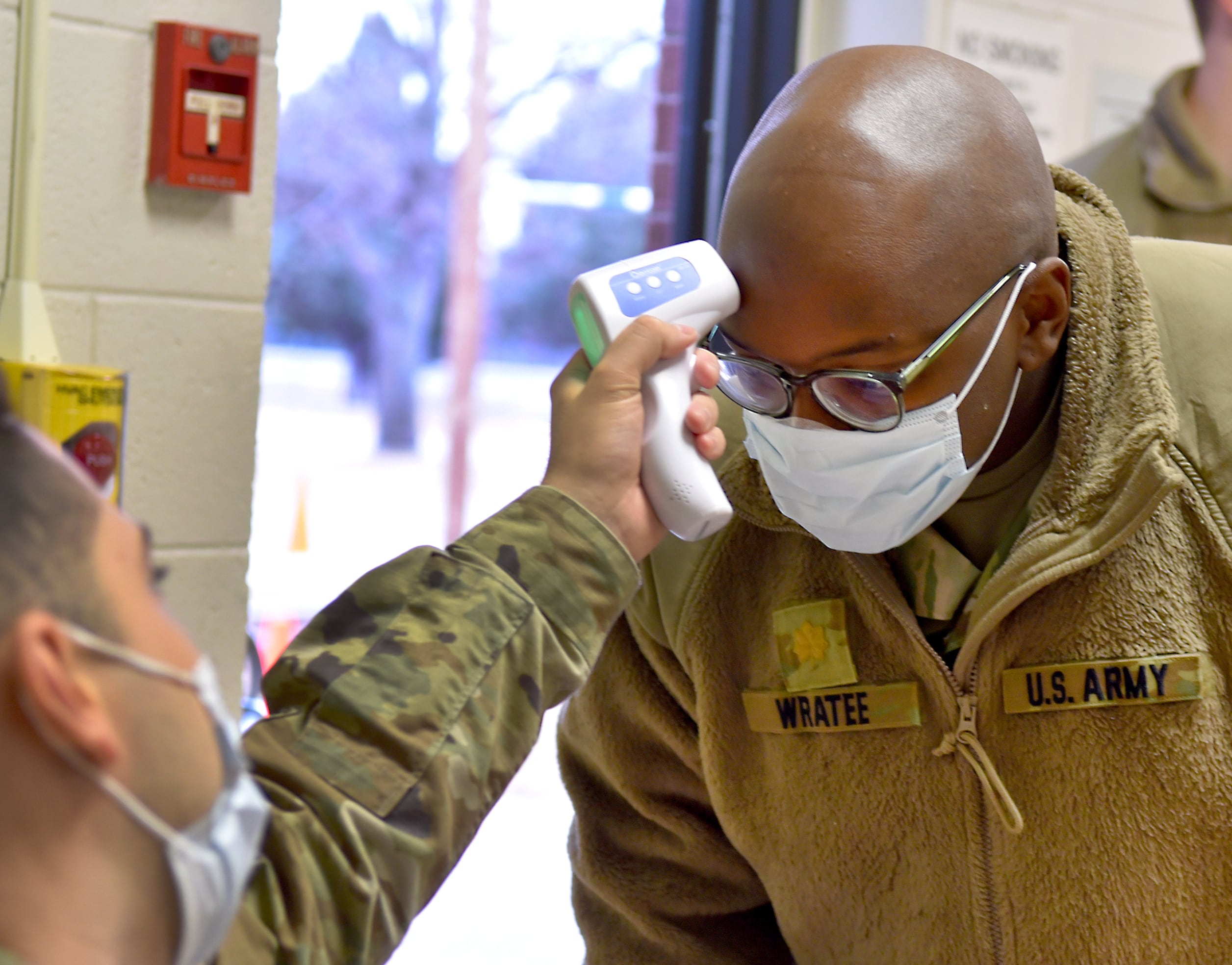The Army National Guard’s Task Force 46 has added another deployment to its demanding COVID-19 response mission that kicked off in March.
This week, soldiers with the task force and associated medical personnel pulled from the Army’s Medical Command out of Texas and the 531st Hospital Center out of Fort Campbell, Kentucky, began arriving in Wisconsin.
About 45 Army medical personnel from the 531st and Joint Base San Antonio-Fort Sam Houston in Texas will support the Marshfield Medical Centers in the cities of Marshfield, Eau Claire, Beaver Dam and Rice Lake, Wisconsin, according to an Army statement.
RELATED

Task Force 46 has current deployments in the COVID-19 hot spots of North Dakota and El Paso, Texas. They’ve deployed soldiers on missions from California to Michigan and areas in between.
The task force is in charge of command and control, supporting military medical personnel who themselves are supporting often overwhelmed frontline civilian health care workers at local hospitals swamped with COVID-19 cases.
Their current pandemic response mission includes an area of 15 states, from the Great Lakes region to the U.S. Southwest, and is expected to last until at least late March. The area spans three of the 10 FEMA regions, with the largest geographic distribution of any of the regions.
“Wisconsin, we stand with you in solidarity as part of the whole-of-America response to the COVID-19 pandemic and in support of FEMA,” said Lt. Gen. Laura J. Richardson, commander for both U.S. Army North and Joint Force Land Component Command of U.S Northern Command. “Working together, alongside our local, state and federal partners, we are committed to caring for Wisconsinites in need and to mitigating this virus.”
Army Times has tracked training and exercises of the task force in recent years, which is drawn mainly from the Michigan Army National Guard’s 46th Military Police Command. They’ve spent the past seven years running various exercises to respond to potential multistate disasters such as chemical, biological, radiological and nuclear accidents or attacks inside the United States.
During the pandemic, they are typically dispatched for initial 30-day relief missions, working alongside local hospital workers, caring primarily for COVID-19 patients. The El Paso mission began in early November and was extended to Dec. 16. The North Dakota mission is scheduled to end by Dec. 23. Either can be extended again, based on need.
Soldiers and other services’ medical personnel arrived in El Paso at a time when there were an estimated 10,000 active coronavirus cases in a county with a population of fewer than 840,000 people. By late November that had doubled to more than 20,000 active cases, according to Centers for Disease Control data.
As of this week, the number has declined to less than 15,000.
North Dakota saw a spike of more than 2,000 new cases in mid-November. That dropped to just a few hundred, then climbed to more than 2,200 in the past week, according to CDC data. The total state population is estimated at about 800,000 people.
Wisconsin saw a daily new case high of nearly 8,500 in mid-November. That has fallen and spiked and fallen again in recent weeks to an estimated 4,100 new daily cases this past week in a state of fewer than 6 million people.
Todd South has written about crime, courts, government and the military for multiple publications since 2004 and was named a 2014 Pulitzer finalist for a co-written project on witness intimidation. Todd is a Marine veteran of the Iraq War.





